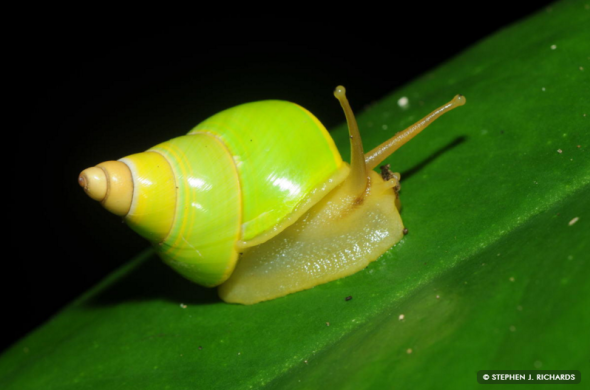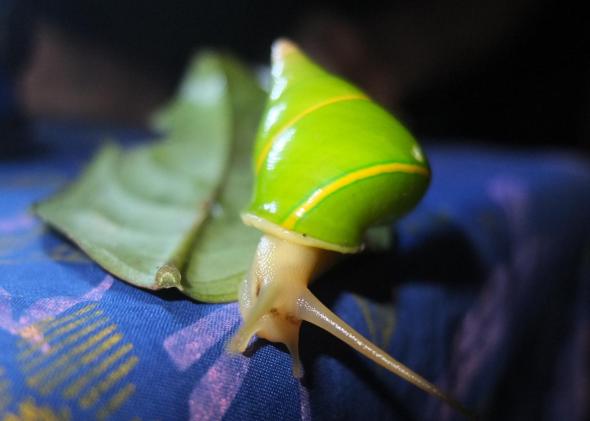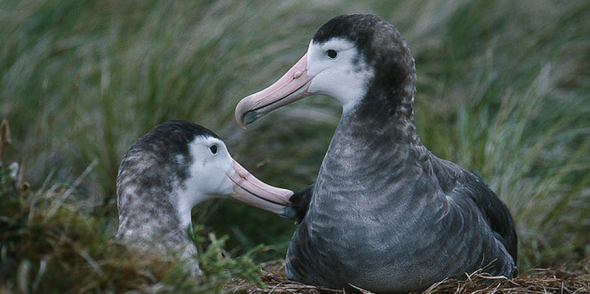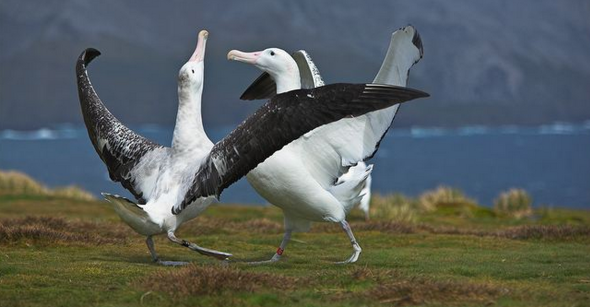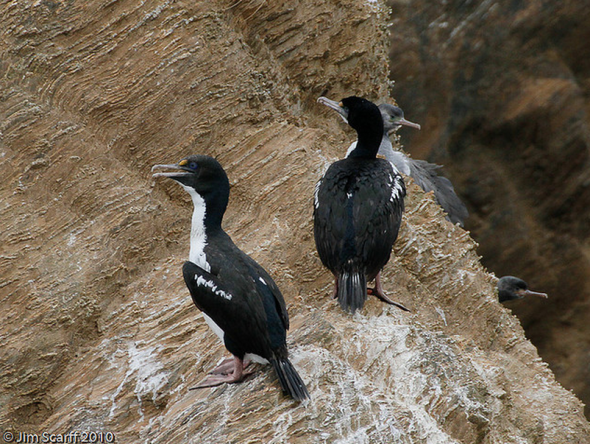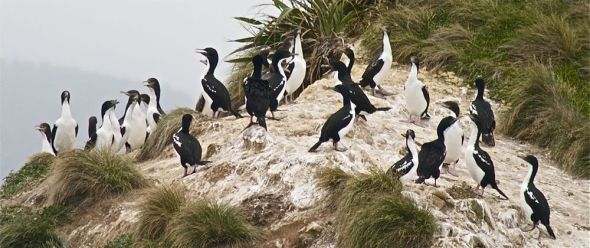ENDANGERED SPECIES MONDAY | PHOCARCTOS HOOKERI EXTINCTION LOOMING - NATIONAL EMERGENCY.
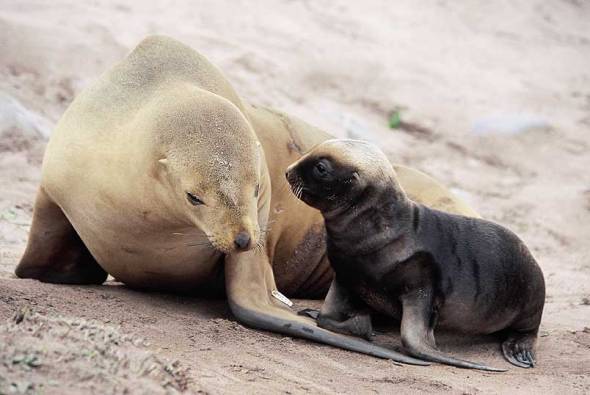
ENDANGERED SPECIES MONDAY | PHOCARCTOS HOOKERI
This Monday’s endangered species (E.S.P.) article I’ve chosen to document on the New Zealand sea lion. Image: New Zealand Sea Lion. Credits: Tui De Roy.
Listed as (endangered) the species was identified by Dr Gray back in 1866. Dr Gray John Edward Gray, FRS (12 February 1800 – 7 March 1875) was a British zoologist. He was the elder brother of zoologist Dr George Robert Gray and son of the pharmacologist and botanist Dr Samuel Frederick Gray (1766–1828).
Dr Gray was Keeper of Zoology at the British Museum in London from 1840 until Christmas 1874, before the Natural History holdings were split off to the Natural History Museum published several catalogues of the museum collections that included comprehensive discussions of animal groups as well as descriptions of new species. He improved the zoological collections to make them amongst the best in the world.
Scientifically identified as the Phocarctos hookeri the species was listed as vulnerable from 1994-2008. Unfortunately due to continued population declines the New Zealand seal is now bordering complete extinction within the wild (and things really aren’t looking good neither) Endemic to Australia (Macquarie Is.); and New Zealand (South Is.), the species is also native to the Pacific North West.
To date there is estimated to be no fewer than 3,031 mature individuals remaining within the wild. New Zealand sea lions are one of the largest New Zealand animals. Like all otariids, they have marked sexual dimorphism; adult males are 240–350 cm long and weigh 320–450 kg and adult females are 180–200 cm long aMnd weigh 90–165 kg. At birth, pups are 70–100 cm long and weigh 7–8 kg; the natal pelage is a thick coat of dark brown hair that becomes dark gray with cream markings on the top of the head, nose, tail and at the base of the flippers.
Adult females’ coats vary from buff to creamy grey with darker pigmentation around the muzzle and the flippers. Adult males are blackish-brown with a well-developed black mane of coarse hair reaching the shoulders. New Zealand sea lions are strongly philopatric.
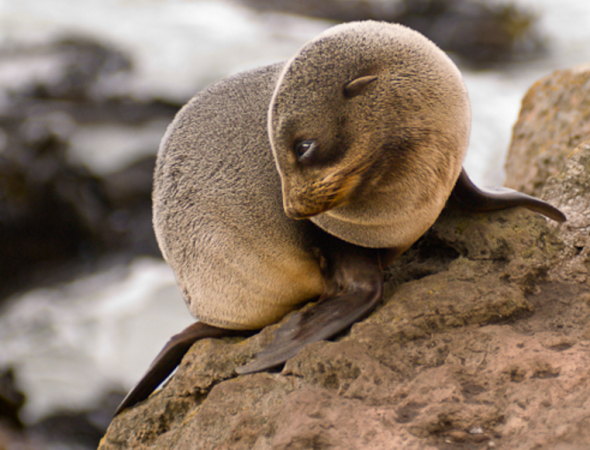
Image: New Zealand Sea Lion Pup. Credits: NZ Fur Seals.
Back in 2012 populations of New Zealand sea lions “were estimated to be standing at a population count of 12,000 mature individuals”. However since that count took place, from (2014) populations have ‘allegedly plummeted’ to all new levels although there doesn’t appear to be any evidence as to why the species suddenly declined - fish trawling and disease have been noted though!.
Like the Maui’s dolphin, the sea lion has come under intense scrutiny this year after research showed its numbers had halved since 1998. It has been classed as nationally critical and if its decline is not stemmed will be extinct within 23 years. A bacterial infection severely reduced breeding in 1997-98, and the species has failed to recover.
Its decline has been compounded by deaths due to squid fisheries, which trawl at a similar depth to the sea lions’ hunting grounds. Conservation groups call the population decline “a national emergency and are calling on stricter by-catch limits and a change in fishing methods”.
BACK IN 2012 THE NEW ZEALAND HERALD REPORTED THE FOLLOWING
In a country with 2800 threatened species, conservation in New Zealand is often about picking winners. The Department of Conservation’s budget and energy can extend only to active interventions for 200 of these endangered species.
Whether a species is protected depends on funding, community input, national identity and research. DoC spokesman Rory Newsam says interventions are often made because the department believes it can “get the most bang for its buck”. But animals and plants are not always invested in because they have a greater chance of survival.
The kakapo receives a relatively large chunk of funding despite being functionally extinct on the mainland. Some ecologists argue too much is spent rescuing the rare parrot, while more crucial parts of our ecosystem are left behind. But the kakapo is protected because it is a charismatic species and the public considers it integral to New Zealand’s ecological identity.
Conservationists say kakapo are a window to New Zealand’s history. They are believed to have inhabited the Earth for millions of years. To kill them off in a fraction of that time is an indictment on the way we live.

Image: New Zealand Sea Lion. Image Credits One Newz.
New Zealand sea lions are known to predate on a wide range of prey species including fish (e.g. hoki and red cod), cephalopods (e.g. New Zealand arrow squid and yellow octopus), crustaceans, seabirds and other marine mammals. Studies indicate a strong location effect on diet, with almost no overlap in prey species comparing sea lions at Otago Peninsula and Campbell Island, at the north and south extents of the species’ breeding range. New Zealand sea lions are in turn predated on by great white sharks, with 27% showing evidence of scarring from near-miss shark attacks in an opportunistic study of adult NZ sea lions at Sandy Bay, Enderby Island.
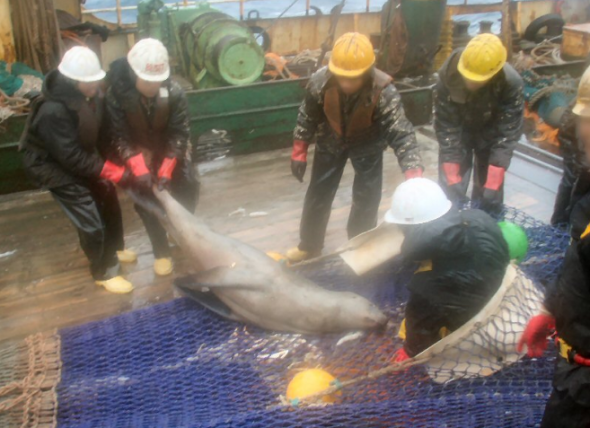
Image: Dead New Zealand Sea Lion in Fishing Net.
Since 2012 New Zealand conservationists, and the public community have been calling on the New Zealand government to do everything they possibly can to preserve this species. Unfortunately as you can see above fishermen are still accidentally killing the species off. As the species is protected under law and listed as endangered, the New Zealand government must take action against these perpetrators, otherwise extinction will most certainly occur.
The Maori people of New Zealand have traditionally hunted Sea Lions, presumably since first contact, as did Europeans upon their arrival much later. Commercial sealing in the early 19th century decimated the population in the Auckland Islands, but despite the depletion sealing continued until the mid-20th century when it was halted.
Commercial sealing in the early 19th century decimated the New Zealand Sea Lion population in the Auckland Islands, but despite the depletion sealing continued until the mid-20th century. The population has yet to fully recover from the period of over exploitation. At the present time, New Zealand Sea Lions have a highly restricted distribution, a small population, and nearly all of the breeding activity is concentrated in two subantarctic island groups. This restricted and small breeding population in combination makes them vulnerable to disease outbreaks, environmental change, and human activities.
The commercial Arrow Squid trawl fishery near the Auckland Islands reported their first New Zealand Sea Lion bycatch mortalities in 1978. Reported or estimated mortality between 1995 and 2007 averaged 92 animals annually (range 17-143) which was 3.7% of the estimated number of mature individuals in the Auckland Island area. Of particular concern is that most bycatch animals are females (up to 91%). New Zealand Sea Lions are also incidentally caught in other trawl fisheries around the Auckland and Campbell Islands.
Apart from direct mortality, competition and habitat modification caused by fishing activity may also be impacting New Zealand Sea Lion foraging areas. Epizootic outbreaks at the Auckland Islands in 1998, 2002, and 2003 led to more than 50%, 33%, and 21% early pup mortality respectively, and were also responsible for the deaths of some animals from other age classes during 1998.
The source of the suspected bacterial agent and cause of the outbreak and subsequent mortality for the 1998 outbreak are unknown, however the 2002 and 2003 outbreaks have been identified as being caused by Klebsiella pneumoniae.
The future of the New Zealand sea lion doesn’t look good at all. I highly suspect that we’re going to lose the species within 10-20 years (if that). More needs to be done to preserve the species habitat and its current fishing grounds as well as protecting from bacterial outbreaks. Failing this the species will be extinct within 10-20 years max. I am highly doubtful here, which is very rare for me to speak about.
Thank you for reading.
Dr Jose C. Depre. PhD. MEnvSc. BSc(Hons) Botany, PhD(NeuroSci) D.V.M.
Environmental, Botanical & Human Scientist.
Endangered Species Monday: Papustyla pulcherrima | Special Report.
Endangered Species Monday: Papustyla pulcherrima
Manus Green Tree Snail - Very first invertebrate to be listed on the Endangered Species Act of the United States of America (2015) Endangered Species Post Special Report.
This Monday’s Endangered Species Post (ESP) I take a wee glimpse into the life of the Green Tree Snail, also commonly known by Papua New Guinea’s natives as the Manus Green Tree Snail. Image Credit: Stephen J. Richards.
Identified by Professor Rensch 1931, Rensch was born on the 21st January 1900 in Thale in Harz and died on the 4th April 1990 in Münster, (Germany), Professor Rensch was an evolutionary biologist, zoologist, ethologist, neurophysiologist and philosopher and co-founder of the synthetic theory of evolution. He was professor of Zoology and Director of the Zoological Institute at the Westphalian Wilhelms University in Münster. Together with his wife Mme Ilse Rensch he also worked in the field of Malacology and described several new species and subspecies of land snails.
The Manus Green Tree Snail is identified as Papustyla pulcherrima commonly known as the Emerald Green Snail. From 1983-1994 this particular species of snail was considered (extremely rare). Back in 1996 when scientists managed to again finally catch up with this stunning little mollusk, the species was then listed as (data deficient) of which to date there remains little information about this (rare) but beautiful snail.
P. pulcherrima is endemic to the Papa New Guinea northern island of Manus of which the species is listed as (near threatened), and has also been reported on the adjacent Los Negros Island. Environmental scientists have confirmed from villagers on the main Manus Island that the species is not located anywhere else. However there are some sketchy reports that the species “may be located on surrounding islands”, however there is no evidence to back these claims up.
Environmental scientists have confirmed for now that the species is located in only 12-13 areas of the Manus Island[s]. Further reports have confirmed that mature individuals are on the decline (which if not controlled could evidently see the species re-listed as vulnerable or endangered). The Manus Green Tree Snail is not believed to be living within fragmented zones. The species is restricted to forest and low intensity garden ‘type’ habitat. Declines have been noted within all 12-13 identified habitats on the Manus Island and adjacent Los Negros Islands. Population history is pretty much undocumented although has been shown to be slowly declining.
Image: Manus Green Tree Snail.
Back in 1930 when Professor Rensch identified the Manus Green Tree Snail, locals soon began collecting the species for trade thus seeing the mollusk now nearing endangered listing. Demand for the Manus Green Tree Snail has now drastically increased threatening the species furthermore. Locals continue to collect this rather unusual colored species shell for use within the jewelry trade. There are now “very serious concerns” that trade may eventually push the species into extinction.
Due to mass trade exploitation the Manus Green Tree Snail is the very first invertebrate to be listed on the Endangered Species Act of the United States of America. International trade has been controlled by export permit since 1975 under the Convention on International Trade in Endangered Species of Wild Fauna and Flora (CITES) appendix II. Unfortunately this is not stopping locals from harvesting the species, and trade is still continuing despite it now a criminal offence under United States and some international laws.
“Overexploitation threatens the Manus Snail”
Market sales data collected from the Lorengau market, over a six day period suggest that annual sales at the market may approach 5,000 shells. Investigations by the Wildlife Conservation Society (WCS) reveal that large quantities of shells are still being attempted to be exported out of the country. Online searches revealed the sale of the shells, often marketed as antiques, occurring in open forums and internet market places based in New Zealand, Australia, and the United States of America (USA). International Animal Rescue Foundation has ran numerous traces online of which located yet again Ebay as being a number one trading site of the “threatened species”, please view the image below and click the image link that’ll direct you to that site.
“EBAY JAPAN IS A HOTBED FOR ILLEGAL TRADE OF THE MANUS GREEN SNAIL”
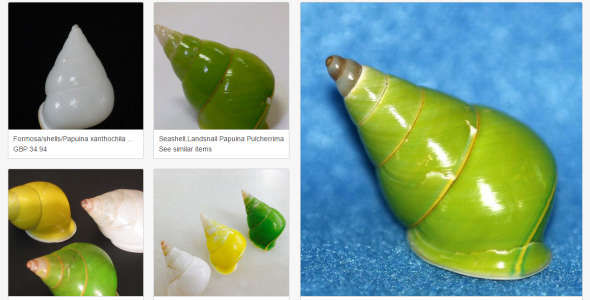
International Animal Rescue Foundation’s External Affairs Department and the Environmental Cyber Crimes Unit located many a sites trading the Manus Green Tree Snail’s shell which is illegal under some trade law, unfortunately the Ebay site listed above, located within Japan is one of many more that are trading (despite the species nearing extinction).
I.A.R.F’s Environmental Cyber Crimes Unit have since filed a complaint with Ebay, providing all the relevant data to now remove these species from their sites, however its likely to prove negative as the trader could very well state they harvested or purchased the shells before international laws were drafted. Furthermore a trace of the owner that owns this site above which is in violation of the United States and Cites laws (is located within the United States). So in regards to enforcement, breaking this link is going to be somewhat of a tough cookie. Further trade was witnessed here via what we can only believe is alleged “antiques”.
Further trade all of which is illegal has been recorded hereto - this site linked back to a Mr Rob West of 121 Henderson Road, Sheldon, Brisbane, Queensland 4157 Australia, Telephone: 610732061636. Mr West from Brisbane categorically states that he doesn’t own a shop, and is a one man band, yet clearly this link states otherwise. Further evidence revealed antique trade conducted on the Ebay site, see in the image below (illegal under United States law).
Click the image link below to view more.
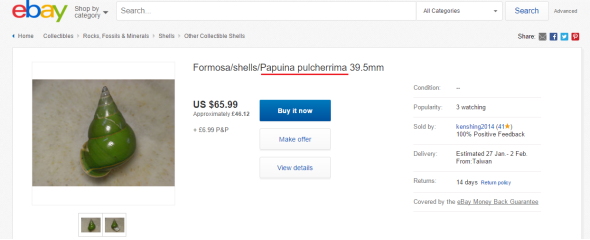
“Illegal to trade under the Endangered Species Act of the United States of America”
The environmental wildlife crimes investigation team linked to TRAFFIC and Cites stated:
It is possible the avoidance of conventional nomenclature is an attempt to avoid detection by authorities. In some cases, sellers on internet market places were based in CITES signatory countries (including: Australia, Italy, New Zealand, Singapore and USA) while others were not (e.g. Taiwan). Currently, volumes of shells on sale in such online market places appear low, suggesting that the existing controls on international trade maybe adequate. However, given that the online prices of shells were often orders of magnitude greater than market prices on Manus Island, vigilance will be required to insure that illegal international demand does not fuel a resurgence in snail collection.
Despite the massive trade on Manus Green Tree Snails online and within open Asian markets, its literally impossible to determine if this trade will eventually lead to the species being pushed into extinction. However it MUST be noted that there are currently only 12-13 identified habitats that the snail currently inhabits. And based on traces online conducted by the I.A.R.F’s External Affairs Department - trade is most certainly “out of control”, and not as Cites has reported (2012).
The shell of this species is a vivid green color, which is unusual in snails. The green color is however not within the solid, calcium carbonate part of the shell but instead it is a very thin protein layer known as the periostracum. Under the periostracum the shell is yellow.
MAJOR THREATS
The Manus Green Tree Snail is mostly threatened by habitat destruction through forest clearance: logging, plantation development (especially rubber) and to a lesser extent road developments. Increasing human population growth and an increasing cultural demand for deriving cash incomes from the land will likely see the rate of forest degradation increase in the future. Harvest occurs when trees are felled as part of traditional shifting cultivation and the snails, typically found in the canopy, suddenly become exposed. Such harvesting is not uncommon but it is likely to be of lower significance than the longer term habitat degradation caused by such agricultural practices.
While harvest for illicit international trade is occurring, the volumes are not “allegedly” thought to be large compared to historic rates, although they may approach levels seen in the legal domestic trade. However, given that the prices of shells internationally are often orders of magnitude greater than market prices on Manus Island, vigilance will be required to insure that illegal international demand does not fuel a resurgence in snail collection.
Notable deposits of gold have been found in central Manus and a mine operation will likely result in the next decade although no details of the plan have been released (as of 2014). The forests of Manus Island were badly affected by the 1997-1998 El Niño which resulted in a prolonged drought. Should climatic change result in increased rates of similar conditions this may constitute a future threat to the snail species, however, current predictions suggest that future incidence of drought in Papua New Guinea will decrease (Australian Bureau of Metrology and CSIRO 2011).
Despite the reassurances from Cites, WCS and the local wildlife organisations - evidence clearly points to large scale online trade legal and illegal. Furthermore there is no telling if shells online are antique or smuggled from the Manus Islands which is very concerning.
Manus Green Tree Snail is the first such snail to be listed on the threatened list of endangered species (USA). Research also explains to us that its likely the species will be plundered into extinction - very soon. Enjoy the video.
Thank you for reading, and please be most kind to share to create awareness and education.
Dr Jose C. Depre PhD. MEnvSc. BSc(Hons) Botany, PhD(NeuroSci) D.V.M.
Environmental & Human Science
Donate by clicking the link below:
https://www.facebook.com/Anti-Pet-and-Bush-Meat-Coalition-474749102678817/app/117708921611213/
Sign up here to our A.P.B.M.C news feed below here:
https://www.facebook.com/Anti-Pet-and-Bush-Meat-Coalition-474749102678817/app/100265896690345/
Follow me on Twitter here:
https://twitter.com/josedepre11
Sources:
IUCN, WWF, CITES, WCS, Ebay, Wikipedia, Australian Bureau of Metrology and CSIRO
Endangered Species Friday: Diomedea amsterdamensis - An Ocean of Grief.
Endangered Species Friday: Diomedea amsterdamensis
This Friday’s (ESP) Endangered Species watch Post I dedicate to one of the most stunning and adorable of all plane like birds. Listed as [critically endangered] and identified back in 1983 by South African Dr Jean Paul Roux whom is a Marine Biologist studying Zoology, Systems Biology and Marine Biology at the University of Cape Town, South Africa Jean Paul Roux works full-time at the Department of Biological Sciences, Cape Town. (Image D. amsterdamensis fledglings)
(Image: Birdingblogs.com)
Commonly identified as the Amsterdam Albatross or Amsterdam Island Albatross the species was listed as [critically endangered] back in 2012. This gorgeous bird is endemic to the French Southern Territories of which its populations are continuing to decline at a rapid pace. Populations were estimated at a mere 170 individuals which in turn ranks as the worlds most endangered species of bird. Out of the 170 individuals there are a total of 80 mature individuals consisting of 26 pairs that breed annually.
Between 2001-2007 there were a total of 24-31 breeding pairs annually, which leaves a slightly lower population count today of around 100 mature individuals. Back in 1998 scientists stated that there were no fewer than 50 mature individuals if that. The Amsterdam Albatross doesn’t naturally have a small population however qualified for the category of [critically endangered] due to this reason when identified in 1983. Furthermore pollution, habitat destruction and disease remain pivotal factors that’s decreasing populations furthermore. The video below from MidWay island explains a little more about pollution and birds of this caliber.
Its quite possible that there could be more unidentified groups within the local territory or elsewhere, unfortunately as yet there is no evidence to suggest the Amsterdam Albatross is located anywhere else, however there have been sightings, which do not necessarily count as the species being endemic to countries the bird may have been noted within.
The species breeds on the Plateau des Tourbières on Amsterdam Island (French Southern Territories) in the southern Indian Ocean. An increase of populations was documented via census back in 1984, a year after identification. Marine Biologists have stated that population sizes may have been more larger when its range was more extensive over the slopes of the island.
Meanwhile in South Africa satellite tracking data has indicated the Amsterdam Albatross ranges off the coast of Eastern South Africa to the South of Western Australia in non-breeding pairs. There have been some [possible] sightings over Australia through to New Zealand too. Meanwhile South Africa “may” have its first breeding pair this must not be taken as factual though. Back in 2013 a nature photographer photographed an Amsterdam Albatross off the Western Cape of South Africa which is the very first documented and confirmed sighting [2013].
AN OCEAN OF GRIEF
Breeding is biennial (when successful) and is restricted to the central plateau of the island at 500-600 m, where only one breeding group is known. Pair-bonds are lifelong, and breeding begins in February. Most eggs are laid from late February to March, and chicks fledge in January to February the following year.
Immature birds begin to return to breeding colonies between four and seven years after fledging but do not begin to breed until they are nine years of age. The Amsterdam Albatross exact diet is unknown, but probably consists of fish, squid and crustaceans. During the breeding season, birds forage both around Amsterdam Island and up to 2,200 km away in subtropical waters which is something of interest. During the great Sardine Run many aquatic species consisting of birds, seals, sharks and whales hit the South African oceans hard for sardines. So I am calling on my fellow South African friends to please be on the lookout for this rather elusive bird.
Read more here on the Avian Biology.
Image: Amsterdam Albatross mating ritual, credited to Andrew Rouse.
Diomedea amsterdamensis, is quite a large albatross. When described in 1983, the species was thought by some researchers to be a sub-species of the wandering albatross, D. exulans. Bird Life International and the IOC recognize it as a species, James Clements does not, and the SACC has a proposal on the table to split the species. Please refer to the link above on Avian Biology which will explain more on the bird and its current classification.
More recently, mitchondrial DNA comparisons between the Amsterdam albatross, the wandering albatross Diomedea exulans, the Antipodean albatross D. antipodensis and the Tristan albatross D. dabbenena, provide clear genetic evidence that the Amsterdam albatross is a separate species.
Threats
Degradation of breeding sites by introduced cattle has decreased the species’s range and population across the island. Human disturbance is presumably also to blame. Introduced predators are a major threat, particularly feral cats. Interactions with longline fisheries around the island in the 1970s and early 1980s could also have contributed to a decline in the population.
Today the population is threatened primarily by the potential spread of diseases (avian cholera and Erysipelothrix rhusiopathiae) that affect the Indian Yellow-nosed Albatross Thalassarche carteri population 3 km from the colony. Infection risks are very high and increased chick mortality over recent years suggests the population is already affected.
The foraging range of the species overlaps with longline fishing operations targeting tropical tuna species, so bycatch may also still be a threat, and a recent analysis has suggested that bycatch levels exceeding six individuals per year would be enough to cause a potentially irreversible population decline. Having a distribution on relatively low-lying islands, this species is potentially susceptible to climate change through sea-level rise and shifts in suitable climatic conditions. Plastic pollution has also been noted as problematic.
International Animal Rescue Foundation Africa and International Animal Rescue Foundation France are currently working on projects to reduce more plastic within bird habitat that has never been visited by the organisation before. The current plight of bird habitat and plastic pollution within the Pacific ocean needs to be worked on by everyone, furthermore addressed immediately.
To date all twenty two species within the four genera of Albatross are heavily threatened with extinction. There remains no species at present that is listed as [least concern]. The future is indeed very bleak for all 22 species and something we now need to work on and towards to preserve Albatross’s before extinction occurs within a decade for the vast majority of all twenty two species and sub-species.
Thank you for reading.
Please share to make aware the plight of this stunning bird and the remaining twenty two species too.
Dr Jose C. Depre.
Botanical and Environmental Scientist.
A planet without birds is a world not worth living within anymore. Daily I am traumatized and deeply disturbed at viewing the destruction we have caused to these stunning animals and, their natural habitat. I am pained, deeply frustrated and infuriated at international retail companies whom preach good yet practice negligence killing off via plastic pollution our species of birds. Jose Depre
Endangered Species Monday: Phalacrocorax carunculatus.
Endangered Species Monday: Phalacrocorax carunculatus
This Mondays (ESP) Endangered Species watch Post is dedicated to the Rough Faced Shag, scientifically known as Phalacrocorax carunculatus. Identified back in 1789 by Professor Johann Friedrich Gmelin (8 August 1748 – 1 November 1804) was a German naturalist, botanist, entomologist, herpetologist and malacologist. (Image credited: Jim Scarff 2010)
Listed as (vulnerable) the Rough Faced Shag doesn’t appear to be listed on either appendix (I) or (II). This Monday I have chosen to document on P. carunculatus as the species is incredibly rare. Thankfully conservation efforts and improvements in relation to protection of habitat have finally stabilized the birds population count. For once in many of my articles I can finally write on a bird that’s populations are not in decline. However, as explained the species is considered one of New Zealand’s rarest specimens.
Endemic to New Zealand the species derives from the family of Phalacrocoracidae. Locals commonly refer to the species by other names such as; New Zealand King Shag or King Shag. P. carunculatus qualified for the listing of vulnerable due to its very small (stable) population size where its restricted to four islands only.
From 1992 to 2002 the estimated number of birds living on all four islands stood at a mere c645 individuals (Est). A further 100-130 breeding pairs were counted too, which is equates (roughly) to 299-1000 ‘mature individuals’. Taking all individuals and breeding pairs into consideration followed up with the last census, it concluded that some 375- 1500 individuals remain on all four islands. Had drastic conservation measures not been implemented the species could have gone extinct.
Conservation practices on all four islands have been undertaken extremely well despite the fact populations are depressed. I personally applaud the New Zealand Government and Department of Environment for their efforts, and thank them for continuing future conservation and bird management projects.
Image: Rough Faced Shag small colony.
92% of the population resides on White Rocks, Sentinel Rock, Duffers Reef and Trio Islands, in the Marlborough Sounds, with two smaller colonies off D’Urville Island. Furthermore surveys on islands have confirmed that populations have remained stable over the last fifty years.
Breeding normally occurs on small rock stacks and islets, the primary diet component is said to be left eyes flatfish. However the Rough Faced Shag will also feed on other marine aquatic specimens too.
Colonies now reside within wildlife sanctuaries that are clearly signposted on the islands reminding tourists and any wannabe poachers to stay clear of Rough Faced Shag habitat. Bird watchers are also reminded to stay clear of habitat, especially when breeding occurs due to the species being very sensitive to human disturbance. I am somewhat concerned as to how a tourist has been able to edge so close the colony within the image above. This isn’t good and as such enforcement teams must remind tour operators of the (code of conduct).
Conservation actions that are now underway include a census count every five years and, monitoring of vessels that can/do cause habitat disturbance. Furthermore development of techniques to establish new colonies of Rough Faced Shags elsewhere for future survival. A code of conduct has been established to (remind commercial boats, fishing-people and tour operators) of their obligations and duties to ensure Rough Faced Shags are not pressurized by human disturbance.
Protection of all breeding grounds has most likely been sought since last documentation on the species (2012). Prevention of marine farming next to ‘any’ colonies breeding or non-breeding and responsible fishing programs have been rolled out minimize by-catch thus ensuring the birds food source requirements are not depleted or harmed in anyway.
Threats
In the 1800s, collecting by ornithologists and hunting for the fashion trade may have affected numbers. Human disturbance (boats, aircraft and scuba divers) can cause desertion of nests and subsequent predation by gulls. New interest from tour operators in the region may increase the problem. Set-nets are sometimes placed very close to colonies and present a major risk. Birds are occasionally illegally shot. Probably the largest threat now is that of tourists or fishermen disturbing breeding and non-breeding colonies. Hence why conservation measures have been put into practice to remind and keep tourists and fisherman away from all inhabitant islands.
Thank you for reading.
Dr Jose C. Depre
Environmental and Botanical Scientist.

